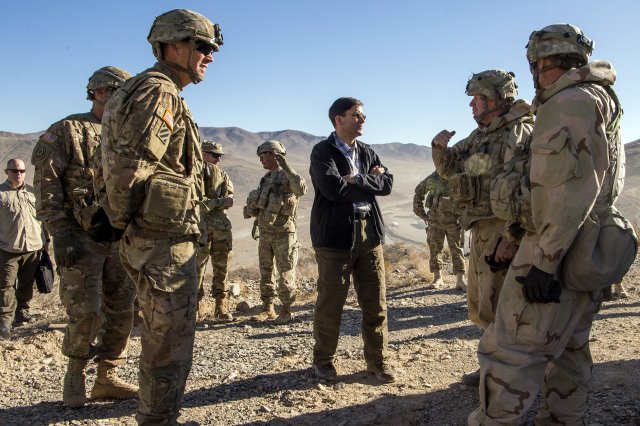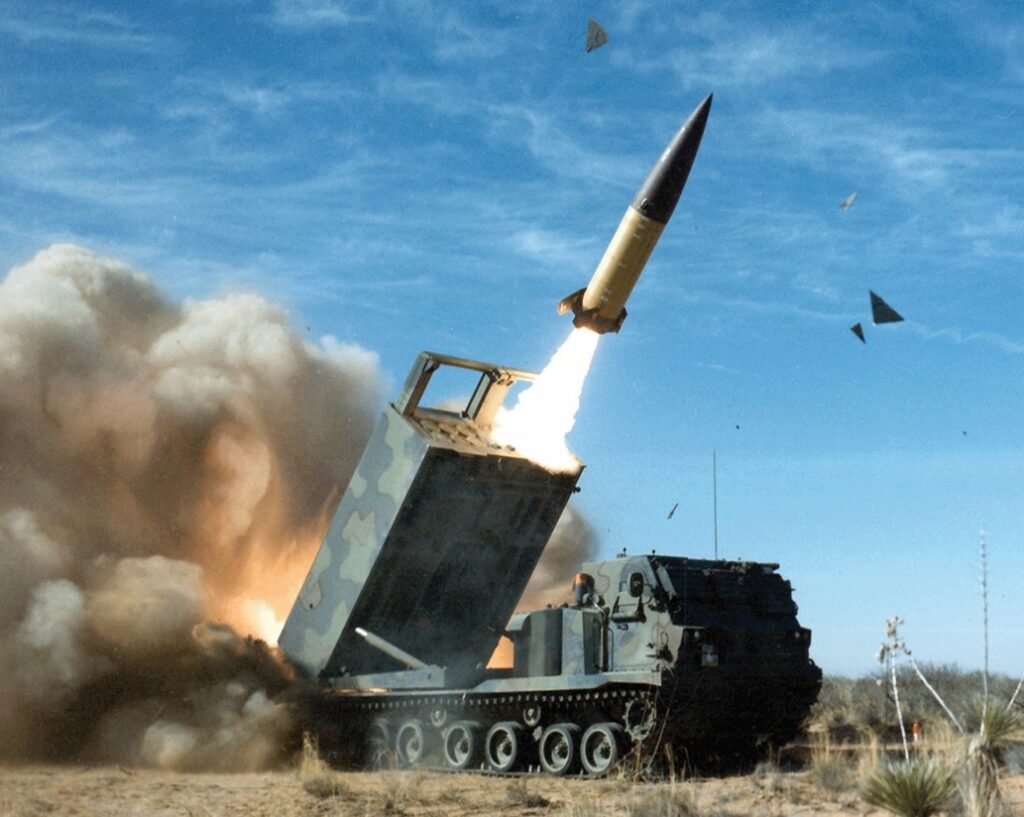CENTER FOR STRATEGIC & INTERNATIONAL STUDIES: It’s remarkable enough that all three service secretaries spent an hour together on stage here this afternoon. (We here at Breaking Defense can’t remember when that’s ever happened). But even more remarkable is that the secretaries of the Air Force, Army, and Navy are getting together regularly in private — without their staffs — to work out new ways to coordinate, especially on science and technology.

Heather Wilson
“We’ve started getting together for breakfast every week or two,” said Air Force Secretary Heather Wilson, “just the three of us. It’s absolutely terrifying the staffs.”
And the breakfast bonhomie is yielding practical results, Wilson added when the laughter died down. “We’ve already identified and started about a dozen things we’re doing together,” she said, “and probably one of the most exciting is looking at our science and technology portfolios: (e.g.) what research is the Navy doing, how can we leverage that in the Air Force, what projects do we want to do together.”
Navy Secretary Richard Spencer — who also oversees the Marine Corps — chimed in at once: “We are sitting there at the S&T level saying, (for example) who should be the lead dog in distributed energy? Where we can say, ‘okay, you lead” versus all of us trying to match each other?”

Richard V. Spencer
“They’ll be talking about a program they’re working on or could work on, and I’ll be there, and I’ll ask myself, is that something I can shoot from an Army vehicle?” said Army Secretary Mark Esper. “And we have a discussion about that, about how we can share technologies between us. It seems obvious, but I’m not sure it’s happened as much as it should in the past.”
All too often, Esper told reporters after the CSIS event, “I feel like I’m working on a 500-piece jigsaw puzzle, and I don’t know whether the Navy has 10 of my pieces and the Air Force has another 20.”
The new coordination needs to be institutionalized beyond three people having breakfast, however senior they are. “We have another meeting coming up where we’re going to get the folks below us — our different acquisition chiefs and maybe some representatives from our laboratories — to dig a layer deeper,” Esper said. “It’s just in its nascent stages.”

Army Secretary Mark Esper speaks to soldiers at the National Training Center on Fort Irwin, California
The Army Collaborates
Collaboration extends to the Army’s new crown jewels, its Big Six modernization priorities. Priority No. 1, for example, is Long-Range Precision Fires. “I’m thinking about not just how I can reach out and touch enemy ground forces, but maybe how can I strike enemy ships, how can I strike enemy airfields that may help the Air Force,” Esper told the CSIS gathering.
So, I asked Esper afterwards, will the long-range fires portfolio include an anti-ship weapon? “Well, it could,” he said. “It should. If I can provide fires in support of my Navy brethren , then why not?” After all, he noted the Army used to have an entire Coastal Artillery corps to defend America’s shores.

The Sikorsky-Boeing SB-1 Defiant concept for the Joint Multi-Role demonstrator, a predecessor to the Future Vertical Lift aircraft.
When it comes to the future of long-range fires, “we are talking a good deal with our other service colleagues,” Esper told the assembled reporters. “We do want to make sure we can build a system that can not only do surface-to-surface (on land) but if called upon do surface-to -ship.”
“The key is, at this point, the Cross Functional Teams,” Esper said. The CFTs are interdisciplinary groups of combat veterans, acquisition experts, and technologists, led by one- and two-star generals, that are working on each of the Big Six priorities (plus two spin-off CFTs). The teams, he said, are “doing that cross-collaboration, not only within the Army, but outside the Army as well.”
Besides collaborating on long-range precision fires, Esper noted, Priority No. 3, a Future Vertical Lift aircraft to replace current helicopters, is already a joint program. No. 6, Soldier Lethality, involves working with the Marine Corps on such things as the Next Generation Squad Weapon, he said.
Is the Army also collaborating with Defense Secretary Jim Mattis’s new initiative for the infantry, the Close Combat Lethality Task Force? “Absolutely,” Esper said. “They’re doing a lot of good work.”

Army ATACMS missile launch.
Multi-Domain: The New Jointness
Collaboration extends beyond R&D to operational concepts. Navy Secretary Spencer told the audience at CSIS that Wilson had invited him and the Chief of Naval Operations, Adm. John Richardson, to the debrief after the Air Force’s flagship annual wargame, CORONA. It was “fascinating,” Spencer said, a chance both to learn about the Air Force’s perspective and to offer some Navy suggestions about, say, submarine-launched cruise missiles versus bombers: “Why load up and fly that far when you could shoot it out of the water for a 22 second air flight?”

An Army graphic illustrating joint roles in Multi-Domain Battle
The Air Force wants to be able to tap that kind of Navy firepower — and provide its firepower to the other services more smoothly. “We’ve put forward a plan for the Congress, included in our budget,” Wilson said at CSIS, “to be able to do Multi-Domain Command and Control using sensors off a variety of platforms — space, air, ground — fusing that data and being able to create a picture for counter-fire from a lot of different domains, (firing) from the air, from the ground, or from sea.”
Central to this multi-domain concept is the ability to use any sensor — in the air, in space, in cyberspace, on the land or sea — to find the enemy and pass targeting data to any shooter — Army, Navy, Air Force, or Marine. The Army is pushing its version, called Multi-Domain Battle, into the schoolhouses where young lieutenants and non-commissioned officers study the art of war, said Esper. Meanwhile the Air Force is focused on what it calls Multi-Domain Command & Control, the network that will link all these disparate forces together. “If we can do that — if you gather information faster, decide faster, and act faster on that information — then we’re going to prevail in 21st century conflict,” Wilson said.
The culture of the military is changing. “When I started out my career as a young officer, when they said ‘you have to do more things that were joint’…. you would check that box,” Wilson said, but it was often a pro forma exercise. The different services coordinated “joint” operations by drawing a line on the map of, say, Serbia and having the Air Force bomb everything on the east and the Navy bomb everything on the west. But after 17 years of war, that’s changed.
“The services are on the cusp of becoming integrated, not just interdependent, not just joint, but integrated in our operations,” Wilson said. “Maybe it’s highlighted by the fact that we’re all three sitting here on the same platform.”
Connecticut lawmakers to grill Army, Lockheed about job cuts at Sikorsky helicopter unit
“The Connecticut delegation has questions about why, with that [FY24] appropriation in hand, this happened,” said Rep. Joe Courtney, D-Conn.


























